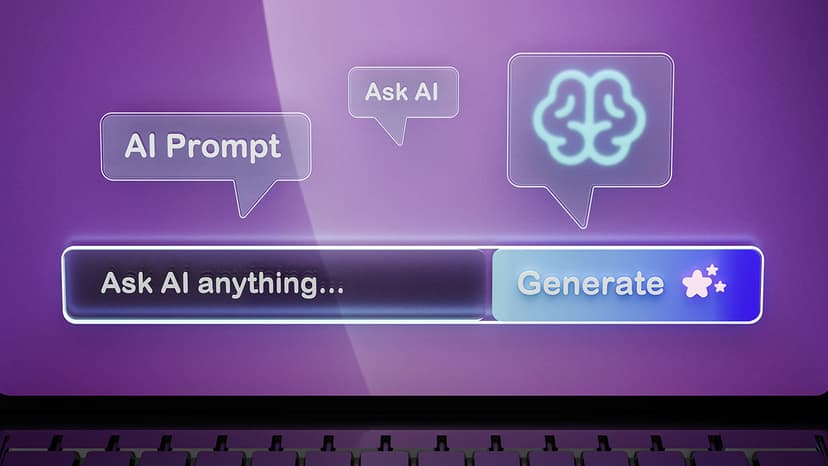Exploring the Magic of Transformers in AI
In the previous article, we discussed the meaning of 'Pre-trained' in Generative Pre-trained Transformer (GPT). Now, let's explore the 'Transformer' aspect of AI. We'll make it fun and easy to understand.
Unpacking the Role of Transformers in AI: A Research Perspective
The emergence of the Transformer model represented a major shift in how AI handles language processing and generation. Prior to its arrival, the AI research community largely relied on Recurrent Neural Networks (RNNs), including Long Short-Term Memory (LSTM) and Gated Recurrent Neural Networks, as the go-to methods for sequence modeling and transduction tasks such as language modeling and machine translation.
The Limitations of Recurrent Models
RNNs process sequences by creating a series of hidden states, each dependent on the previous state and the current input. This sequential processing has a major limitation: it’s inherently linear and can’t be fully parallelized. In simpler terms, it's like reading a book word by word, where understanding each word depends on the ones before it. This method works, but it's slow, especially for longer sequences. Despite various improvements to enhance computational efficiency and model performance, the fundamental constraint of sequential computation remained a bottleneck.
The Groundbreaking of Transformer
The Transformer model, proposed in the groundbreaking research paper "Attention Is All You Need", brought a paradigm shift. It completely does away with recurrence (the dependency on previous steps) and relies entirely on a mechanism called "attention" to understand the relationship between different parts of the input data.
Imagine attention in Transformers like having a superpower to read an entire page of a book at once and instantly knowing which words are most important for understanding the story. This mechanism allows the model to directly focus on relevant parts of the input, regardless of their position in the sequence. This is a game-changer, especially for longer sequences, where the relationship between distant elements is crucial.
One of the most significant advantages of the Transformer is its ability to parallelize computations. Unlike RNNs, which process data in a linear fashion, Transformers can handle multiple parts of the data simultaneously. This capability not only speeds up the training process but also allows for handling longer sequences more effectively.
Transformers have unlocked new possibilities in AI, enabling more efficient, effective, and sophisticated language models. The impact of this innovation continues to resonate throughout AI research and applications, paving the way for more advanced and capable AI systems.
The technical details of attention in Transformers in AI reveal a deep and intricate world of mathematics and algorithms. This attention mechanism is a big part of what makes Transformers really good at understanding and generating language.
Understanding Attention in Transformers
Think of the attention mechanism in a Transformer as a smart highlighter that knows which words in a sentence are the most important. Instead of treating every word the same, it gives different levels of importance to each word. For example, in the sentence “The cat sat on the mat,” words like 'cat' and 'sat' are more important for understanding the sentence than words like 'the' or 'on'. The Transformer figures this out with its attention mechanism.
How Attention Scores Are Calculated
Let's dive into how a Transformer calculates which words are important:
-
Assigning Vectors:
- Query Vector (Q): Represents the word we're focusing on.
- Key Vector (K): Represents the words we're comparing it to.
- Value Vector (V): Represents the actual content of the words we're looking at.
-
Calculating Scores:
- The attention score for each word is calculated using the dot product of the Query vector and Key vector. Mathematically, it's represented as: $$ \text{Score} = Q \cdot K^T $$
- This score is a measure of relevance between the word in focus (the Query) and other words in the sentence (the Keys).
-
Scaling the Scores:
- The scores are then scaled down by dividing by the square root of the dimension of the Key vectors ($d_k$). This makes training more stable and efficient. The scaled score is: $$ \text{Scaled Score} = \frac{Q \cdot K^T}{\sqrt{d_k}} $$
-
Applying Softmax:
- The softmax function is applied to the scaled scores to convert them into probabilities. This step ensures that all the scores for a word add up to 1, turning them into a sort of probability distribution. The formula for softmax is: $$ \text{Softmax(Scaled Score)} = \frac{\exp(\text{Scaled Score})}{\sum \exp(\text{Scaled Score})} $$
- These probabilities determine how much each word will contribute to the final representation of the word we're focusing on.
-
Calculating the Weighted Sum:
- Finally, the probabilities are used to create a weighted sum of the Value vectors. This sum is the output of the attention mechanism for that word, and it's calculated as: $$ \text{Output} = \text{Softmax(Scaled Score)} \cdot V $$
- This output is a vector that represents not just the word itself, but its meaning in the context of the surrounding words.
Through these steps, the Transformer can pay attention to the most important parts of a sentence, understanding not just words, but context and relationships between words incredibly well.
Understanding Context and Connections
One of the cool things about the attention mechanism is how it understands the context and connections between words. If a sentence mentions "John" and then later uses "he," the Transformer uses attention to figure out that "he" probably refers to "John." It does this by focusing more on the words that matter to "he."
Multi-Head Attention
Finally, Transformers use something called "Multi-Head Attention." This means they don't just go through this process once; they do it several times in parallel. Each 'head' focuses on different parts of the sentence, allowing the Transformer to understand various aspects of language, like grammar and meaning, all at the same time.
Why Are Transformers Important?
Transformers is a true game changer in AI, especially to the language understanding and processing. In the world of language translation, tools like Google Translate have seen remarkable improvements in accuracy and fluency, thanks to Transformer models that adeptly handle the complexities of different languages. Moreover, these models are driving advances in AI-generated content, from writing stories to coding, offering invaluable assistance to writers, programmers, and educators. Beyond these applications, Transformers play a crucial role in making technology more interactive and accessible, enabling machines to communicate with humans more intuitively. This has not only transformed how machines comprehend and utilize human language but also led to the development of smarter, more responsive, and user-friendly technologies, fundamentally altering the AI landscape in language processing.












